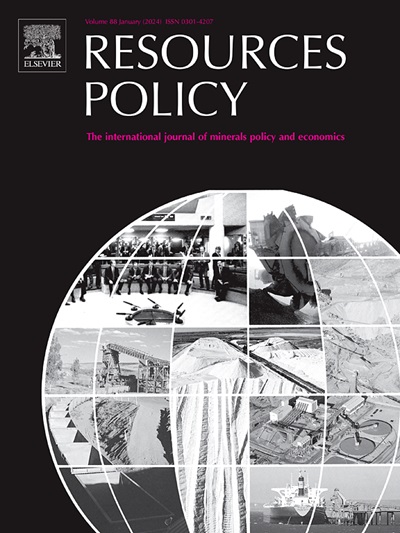Evaluating battery minerals future supply through production predicting in the context of the green energy transition
IF 10.2
2区 经济学
0 ENVIRONMENTAL STUDIES
引用次数: 0
Abstract
A global transition from the current “brown economy” to a “green economy” has been perceived as an ineluctable carbon neutrality strategy to deal with climate change and its global devastating impacts. This global ambition of green economy necessitates large-scale electrification which imposes growing demand for lithium-ion batteries as state-of-the-art energy storage technologies. Thereupon, the developing market of batteries reinforces the concern over the resilient and consistent supply of battery raw materials. By the reason of the interdependencies of all the stages involved in a value chain of a battery, it is critical to identify the battery material supply-disruptive risks and uncertainties, and subsequently to analyze the impacts of the perpetuation of the supply issues on the future market of batteries. In this research study, to contribute to these processes necessary for overcoming the ongoing supply sustainability challenges, the focus is on lithium, nickel, graphite, and cobalt, which are among the battery raw materials with high supply risks. After analyzing and categorizing the driving forces behind the historical and current bottlenecks to their mining production, the regional and global mining production of those battery materials have been predicted for twenty years ahead using three time series forecasting techniques including Seasonal Autoregressive Integrated Moving Average, Holt's linear trend, and Holt-Winters’ methods. Forecasting possible future production trends of those battery raw materials is indisputably imperative to resolve planning strategies while dealing with uncertainties and supply risks. Reliable supply forecasting results provide more uncertainty and risk management achievements since the stakeholders and policymakers can use the outcomes as a source of information in the decision-making process at any stage of a lithium-ion battery value chain.
求助全文
约1分钟内获得全文
求助全文
来源期刊

Resources Policy
ENVIRONMENTAL STUDIES-
CiteScore
13.40
自引率
23.50%
发文量
602
审稿时长
69 days
期刊介绍:
Resources Policy is an international journal focused on the economics and policy aspects of mineral and fossil fuel extraction, production, and utilization. It targets individuals in academia, government, and industry. The journal seeks original research submissions analyzing public policy, economics, social science, geography, and finance in the fields of mining, non-fuel minerals, energy minerals, fossil fuels, and metals. Mineral economics topics covered include mineral market analysis, price analysis, project evaluation, mining and sustainable development, mineral resource rents, resource curse, mineral wealth and corruption, mineral taxation and regulation, strategic minerals and their supply, and the impact of mineral development on local communities and indigenous populations. The journal specifically excludes papers with agriculture, forestry, or fisheries as their primary focus.
 求助内容:
求助内容: 应助结果提醒方式:
应助结果提醒方式:


